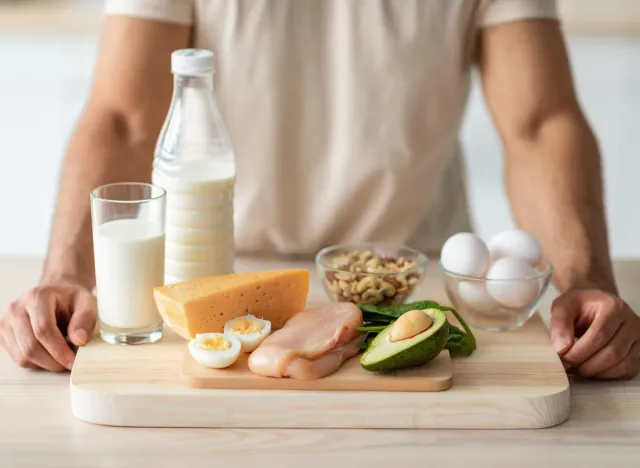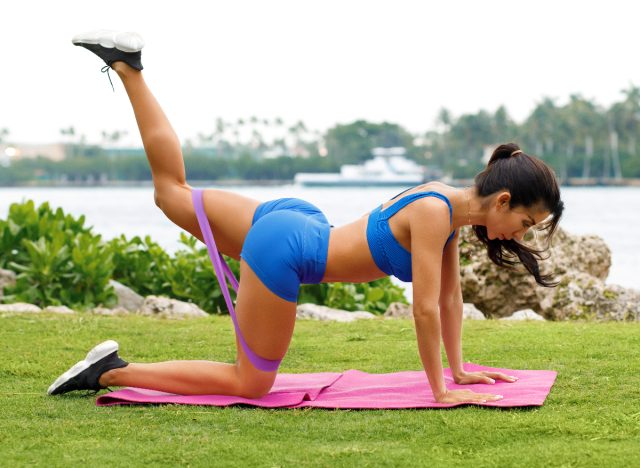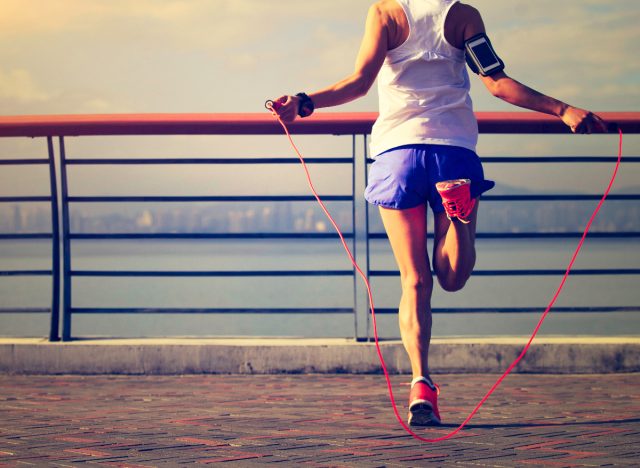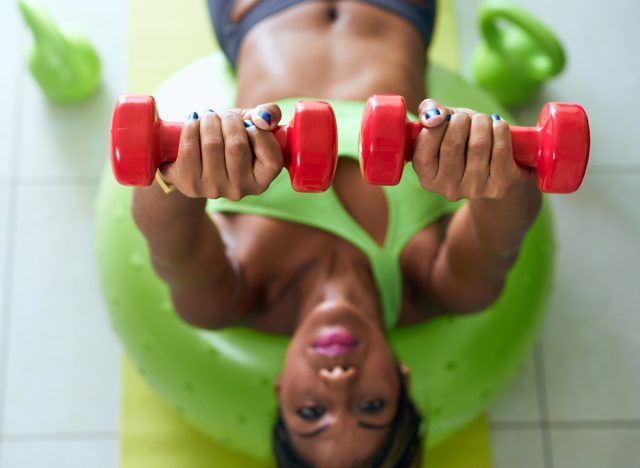How To Lose 20 Pounds Without a Gym Membership

Slimming down and getting into shape doesn't require a pricey gym membership or fancy equipment. In fact, with the right game plan, you can lose 20 pounds without a gym membership—whether that be at home or wherever you're most comfortable working out. At the end of the day, weight loss depends on the difference between the number of calories you consume and the number of calories you burn during the day. A gym membership gives you access to training equipment and fitness classes that make it easy to torch calories, but it's not mandatory for successful weight loss.
"You can still burn calories by exercising with just your body," explains Domenic Angelino, CPT with the International Personal Trainer Academy (IPTA). "You can still lose weight through exercise even if you [can't] use weights. Plus, the amount of food you eat influences weight loss as well. This means you functionally have three pathways to losing weight: eating less, working out more, or doing a mix of both. Doing a mix of both is most effective."
Angelino stresses that you should try to keep weight loss to an average of approximately 0.5 to 2 pounds a week since fast weight loss results in muscle loss in addition to the fat you lose. "This translates to having around a 250 to 1000 calorie deficit per day," he explains. "Meaning you should aim for eating about 250 to 1000 [fewer] calories than you burn each day to lose weight at a healthy rate."
If you want to lose 20 pounds, Angelino outlines exactly how you can accomplish that without a gym membership.
1. Consume a Nutritious Diet

First and foremost, be mindful of your diet, as it plays a crucial role in losing weight.
"Fortunately, you don't have to make dieting super complicated, technical, or overwhelming if you don't want to," explains Angelino. "Just identify places in your diet where you can substitute out foods that you normally eat with lower calorie versions of those foods. For example, if you like to make sandwiches, find a way to replace your bread with lower-calorie bread. Do the same for the content of the sandwich. Taking small steps like this really adds up, and everything helps you lose weight more easily. Substitute calorie-expensive foods for calorie-low foods."
2. Establish Effective Habits

Build productive habits that will stick and help you progress toward your goals. According to Angelino, a major one for individuals who don't have a gym membership is where they work out. So, find a place to dedicate to your fitness sessions—and only use it for that.
"It can be a space in your home, a nearby park, or wherever you like. This can make it a lot easier to stick to your workouts long-term," Angelino tells us. "People often make the mistake of planning to do home workouts in an area they use for leisure activities for rest. This often doesn't turn into an effective habit because many people who take this approach have difficulty motivating themselves to actually use that space for exercise, given they already associate it with rest."
3. Work Out Three to Five Days a Week

Aim to work out three to five days a week. This goes without saying, but the more you exercise, the more calories you'll burn—and burning more calories means faster weight loss. That being said, don't overdo it. Carving out ample time to rest and recover between sessions is essential to muscle repair and progress.
"Making sure you get enough rest also sets you up to give your all in your next workout, enabling you to make the most of it," Angelino points out. "This is why the sweet spot for most people will be to aim to work out three to five days per week. If you're new to working out, start by aiming for three days per week. Then gradually build up to five days per week over time."
4. Invest in Affordable Home Workout Equipment

Working out with your body weight can be incredibly effective, but you may want to purchase some affordable home workout equipment to change things up.
"Everything counts, but you'll find you make a lot more progress if you use some form of equipment," says Angelino. "This lets you match the resistance you use to your current level of strength, making workouts more effective. It can be a big upfront cost but can pay off in the long run. Look into purchasing adjustable dumbbells to help train your muscles. [Consider] purchasing cardio equipment like a stationary bike or treadmill to help you get cardio workouts even when the weather doesn't permit you to exercise outside."
5. Incorporate Progression Into Your Training Sessions

Progression is key if you want to lose weight. As you become fitter, your capacity to perform work will increase. This means you'll be able to up the intensity and duration of your workouts as time passes.
"The more intense your workouts are and the longer they last, the more calories they'll help you build," Angelino explains. "So, try to incorporate strategic progression into your training to take advantage of this benefit. Make small changes when possible, and everything will add up over time."









